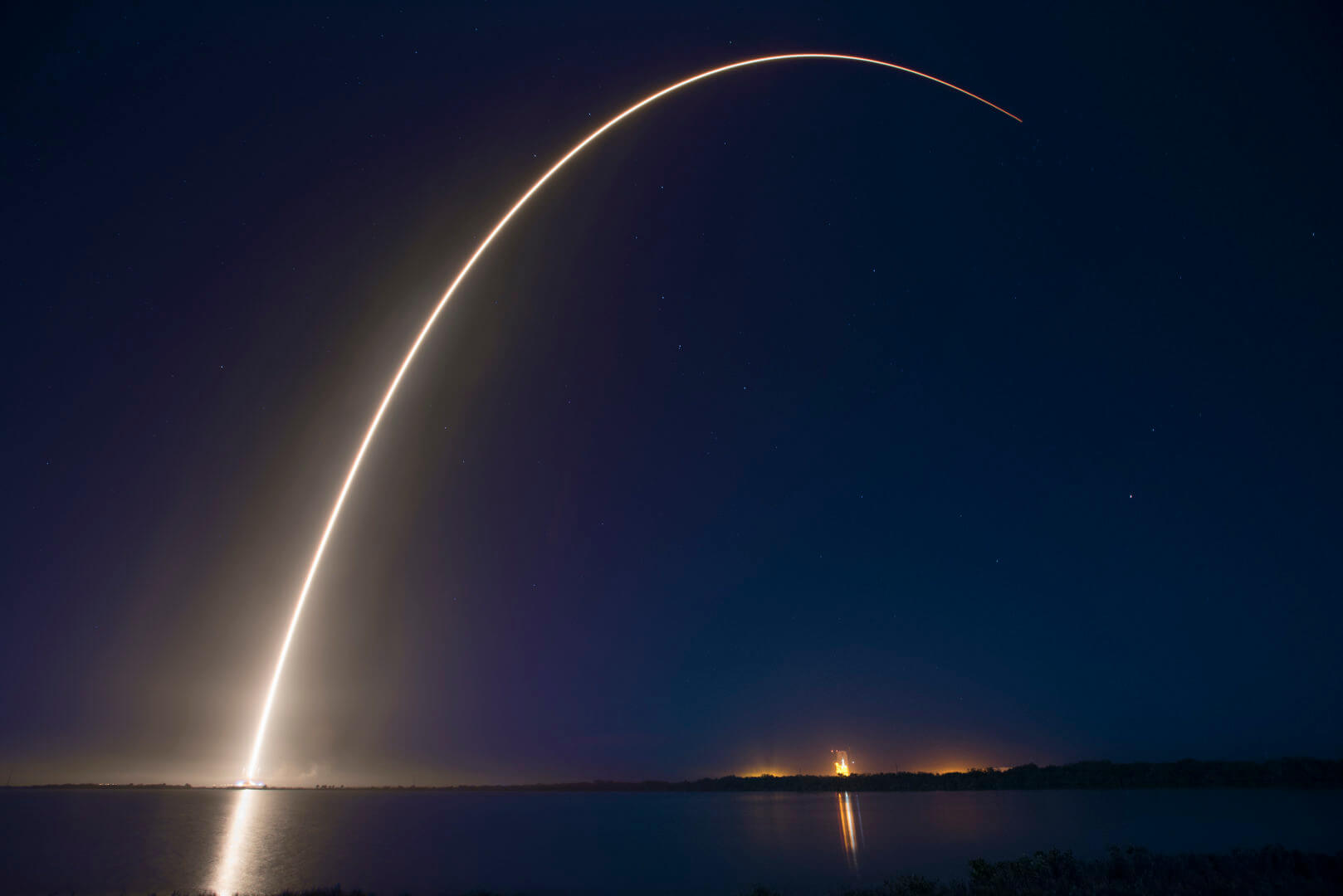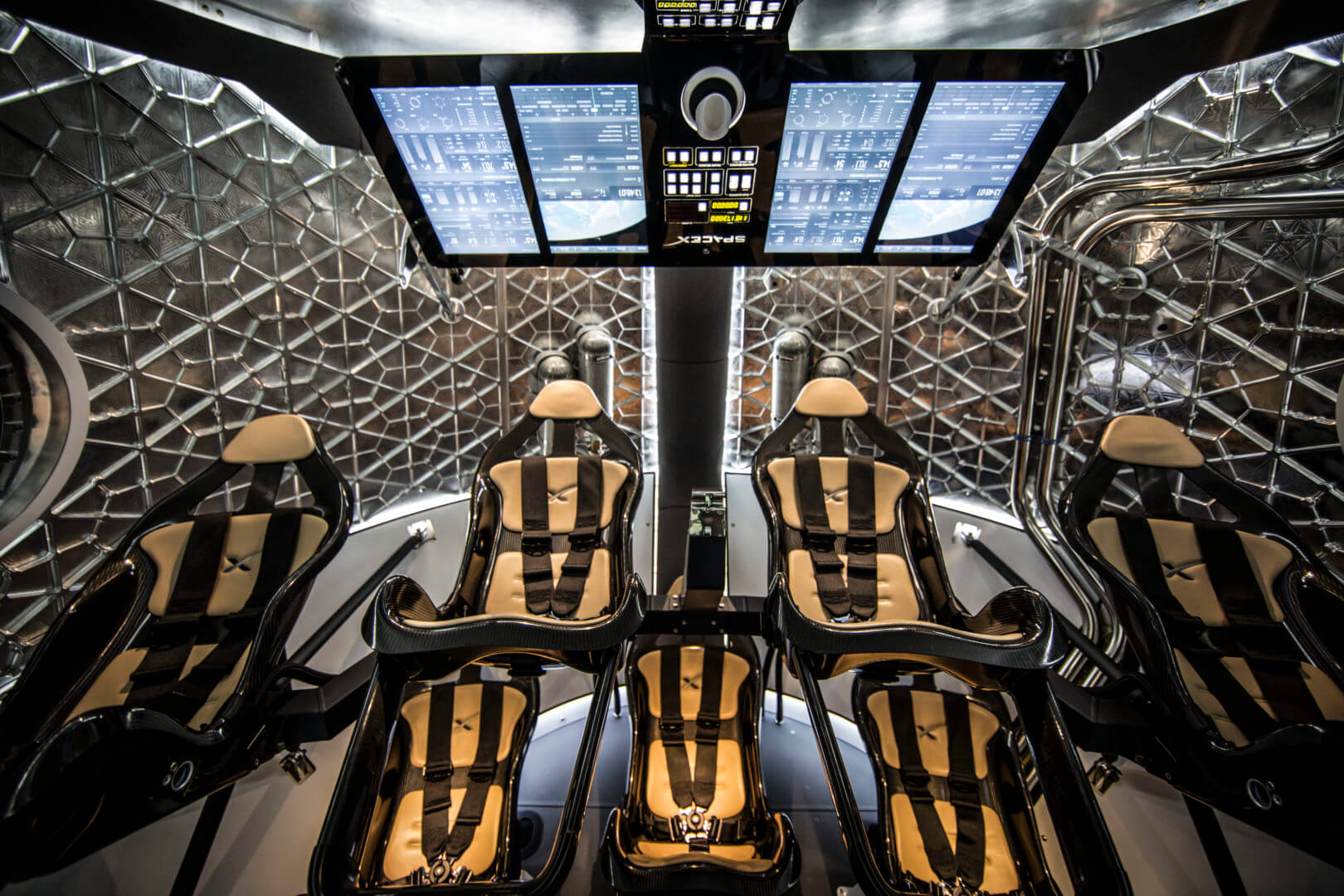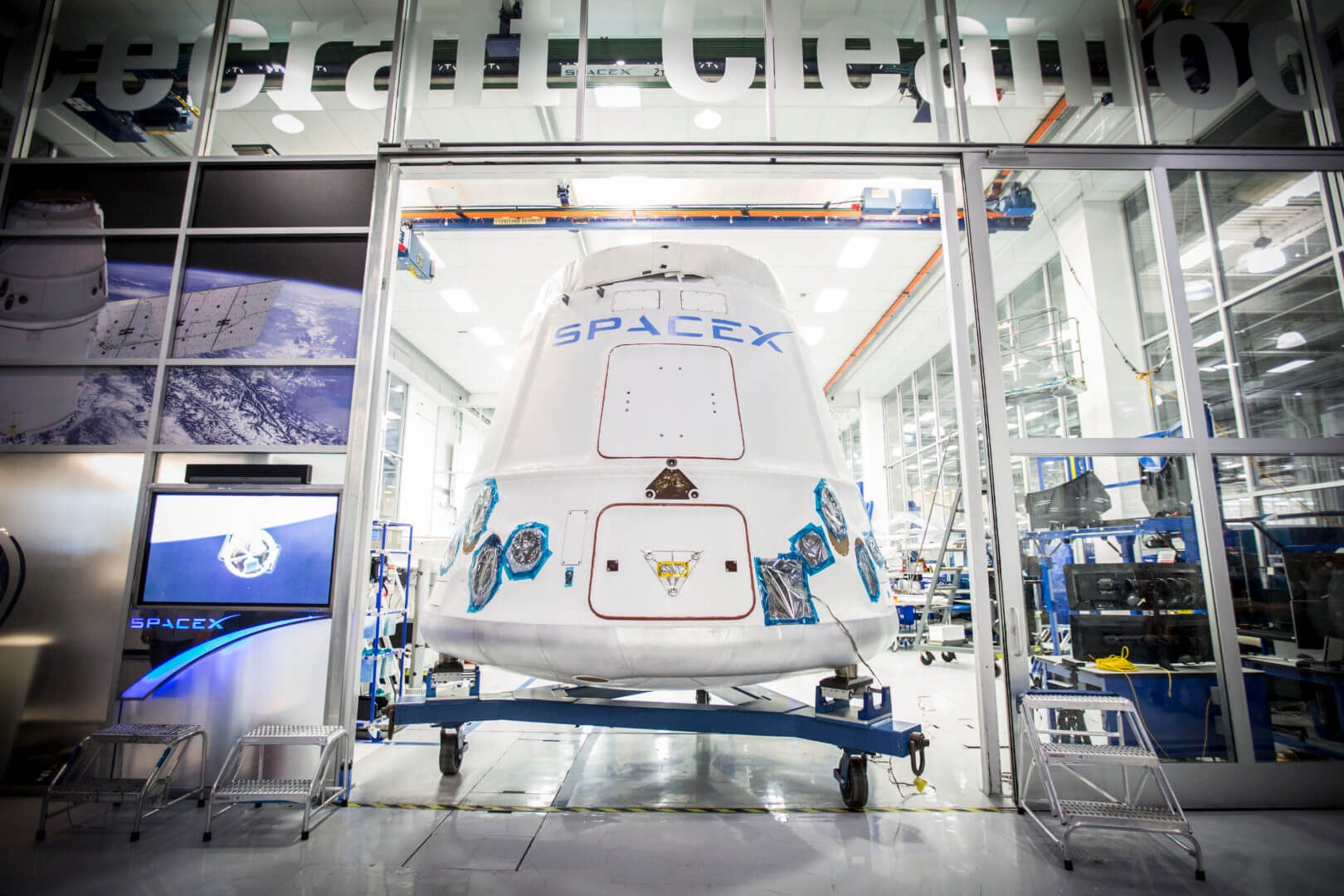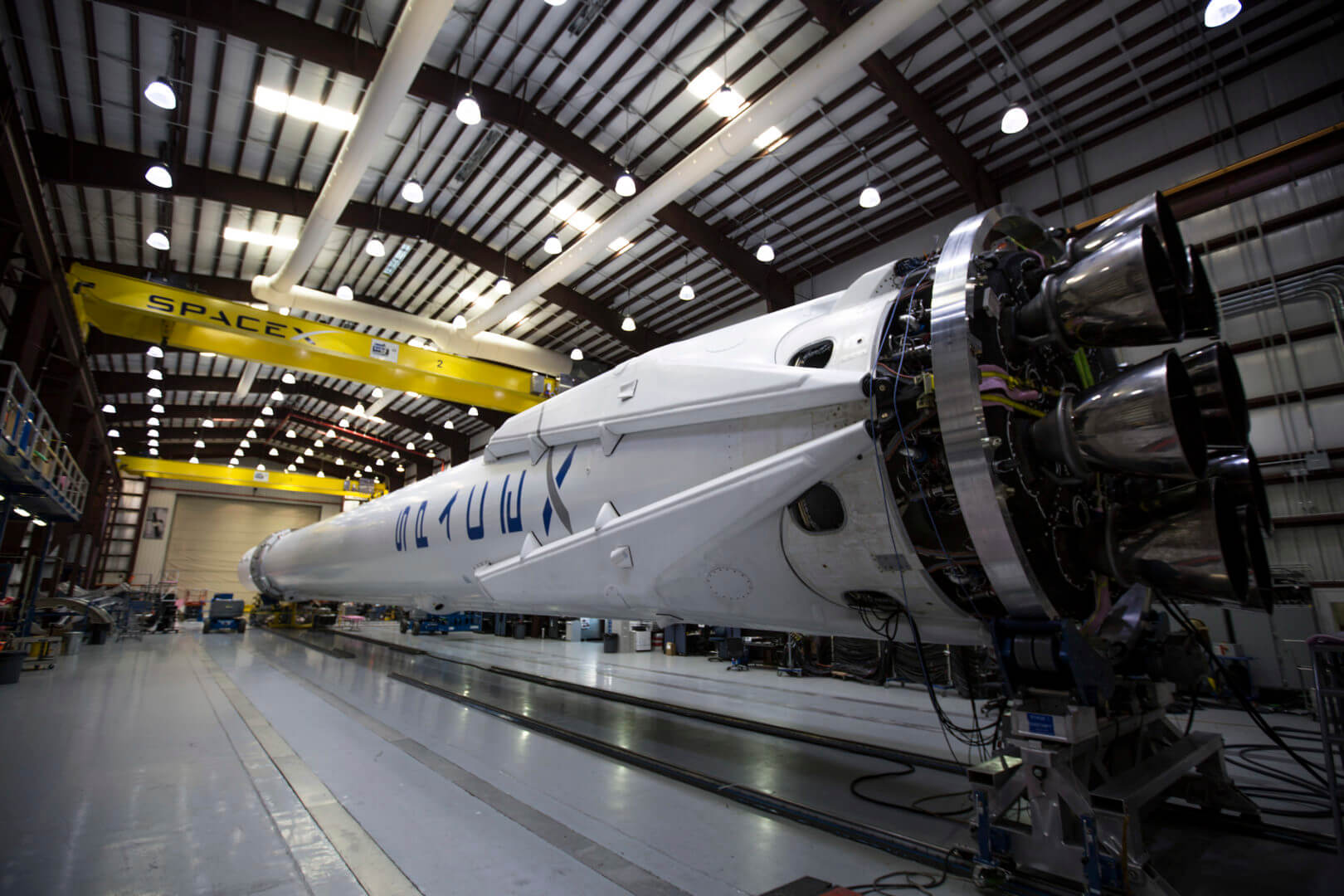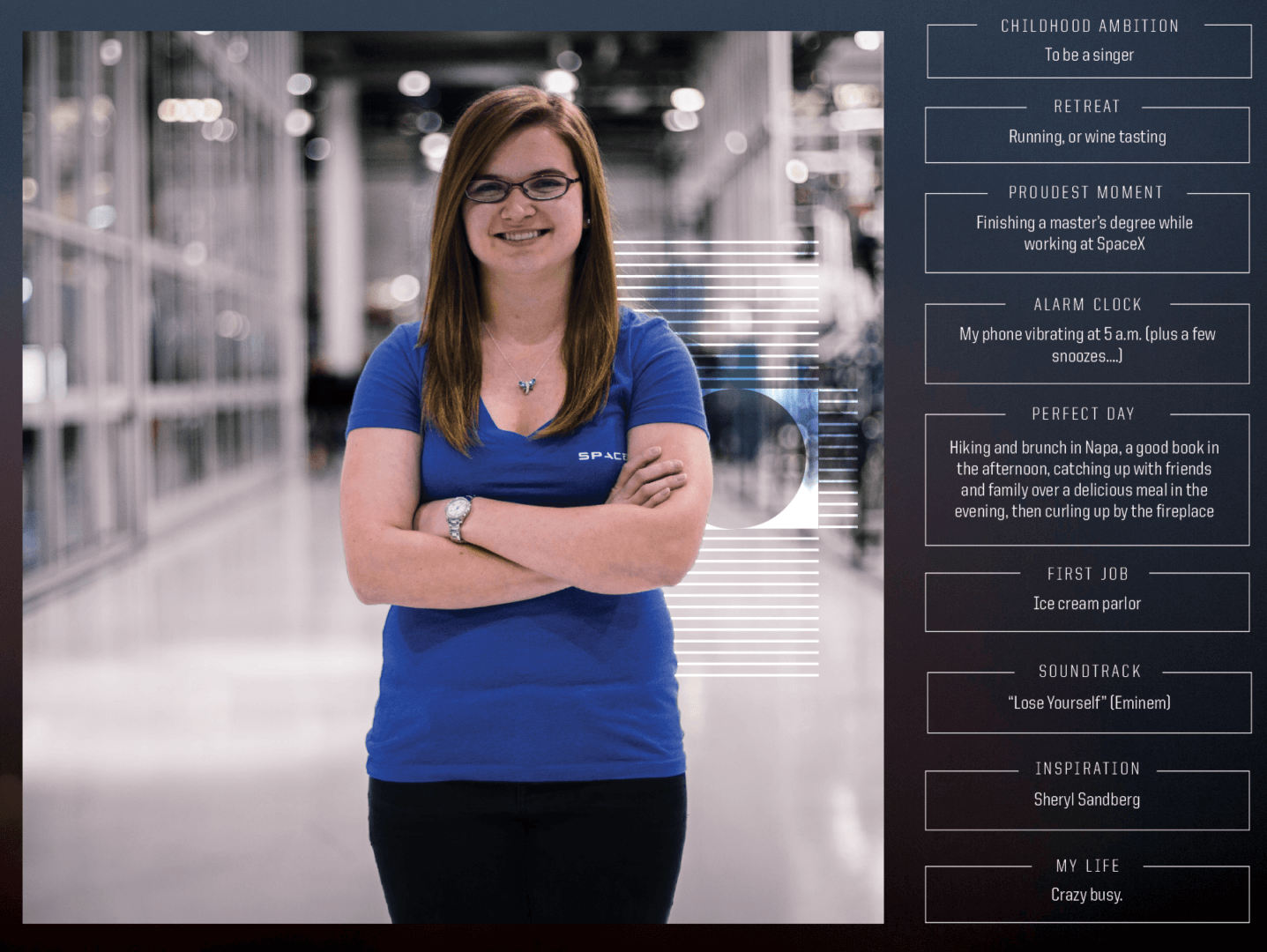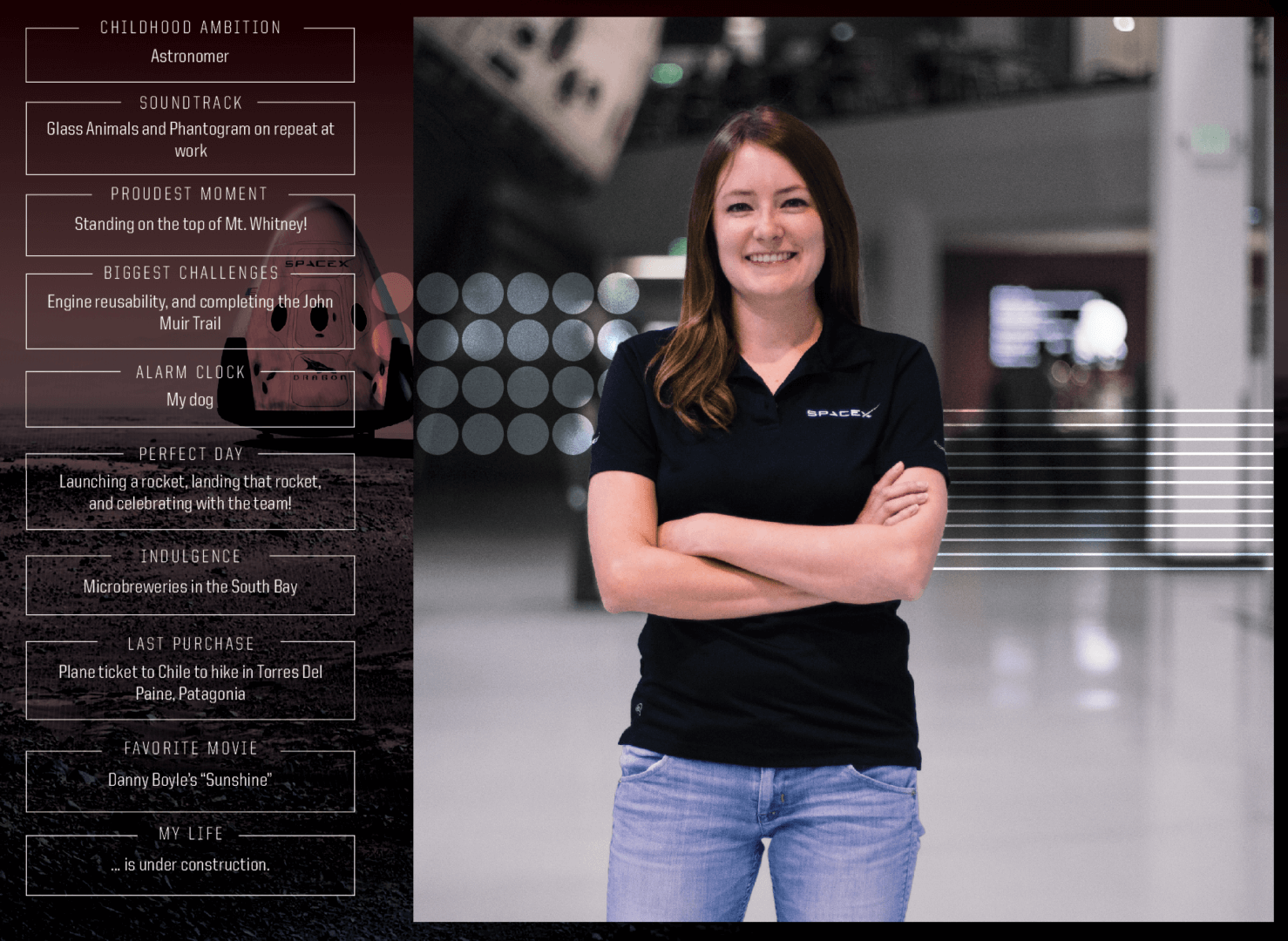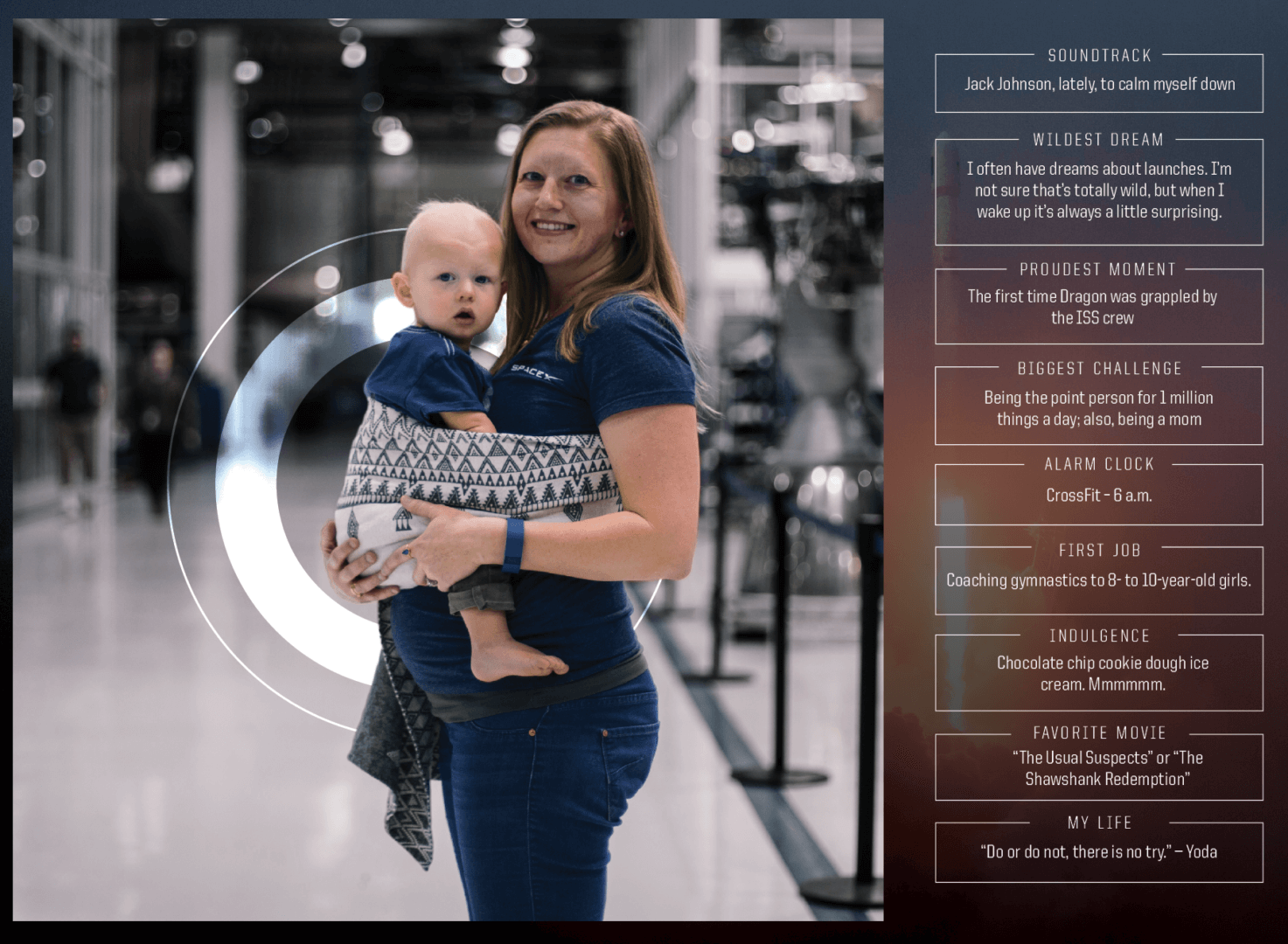Trojans helping SpaceX go to Mars
What’s it like to work at a company whose main mission it to revolutionize space technology? Where your workday consists of designing, building and launching advanced rockets and spacecraft with the ultimate goal of enabling people to live on other planets.
Welcome to SpaceX.
Working behind the scenes, are the Trojan men and women building the proverbial ark that one day will allow humanity to be truly an interplanetary species. And this is their story.
Why Mars?
If you had a document that contained all the data with life on Earth wouldn’t you back it up onto a second hard drive?
When you think of just yourself, your children and maybe your grandchildren, being chained to Earth for another 100 years isn’t such a bad gig. But when you take the fate of humanity as a whole into consideration over the course of hundreds or thousands of years, backing up the hard drive is a no brainer. Even if that second drive is 200 days away, colder than Antarctica and looks like Death Valley.
Elon Musk, SpaceX’s CEO and Lead Designer, thinks of it as humanity’s greatest adventure as well as life insurance for the species: “If one could make a reasonable argument that something is important enough to fit on the scale of evolution, then it’s important. And maybe worth a little bit of our resources.” These are the reasons why he wants to put a million people on Mars and create a completely self-sustaining population.
The first key to accomplishing something so groundbreaking was finding the right talent. And where would SpaceX find this wellspring of talent? Oftentimes right in its own back yard – USC Viterbi School of Engineering.
As of this writing, SpaceX now employs more engineers from USC Viterbi than from any other school.
These Trojans have helped SpaceX gain worldwide attention for a series of historic milestones. It is the only private company ever to return a spacecraft from low-Earth orbit, which it first accomplished in December 2010. They made history again in May 2012 when their Dragon spacecraft attached to the International Space Station, exchanged cargo payloads, and returned safely to Earth — a feat previously accomplished only by governments: the U.S., Russia and China. Since then Dragon has delivered cargo to and from the space station multiple times, providing regular cargo resupply missions for NASA.
With over 70 launches on its manifest, representing over $10 billion in contracts, SpaceX is the world’s fastest-growing provider of launch services.
Under two different multi-billion contracts with NASA, SpaceX will fly numerous cargo resupply missions to the ISS, for a total of at least 24—and in the near future, they will carry crew as well. Dragon was designed from the outset to carry astronauts and now, under a $2.6 billion agreement with NASA, SpaceX is making modifications to make Dragon crew-ready.
Currently under development is the Falcon Heavy, which will be the world’s most powerful rocket. Meanwhile, SpaceX continues to work toward one of its key goals—developing reusable rockets, a feat that will transform space exploration by delivering highly reliable vehicles at radically reduced costs.
“I’m hopeful that the first people could be taken to Mars in 10 to 12 years,” Musk said in a recent CNBC interview. “But the thing that matters long term is to have a self-sustaining city on Mars, to make life multi-planetary.”
This multi-planetary thinking and a passion for space exploration is at the heart of SpaceX hires and what the Trojans who work at SpaceX embody. After all, they may be among the first people to set foot on the Red Planet.
Bogdan Marcu
Senior Turbomachinery Engineer on Merlin 1D engine ’96 PhD, Turbomachinery Design
When Bogdan Marcu was a boy he watched Neil Armstrong walk the moon’s surface through analog static on his TV in communist Romania. From that moment, Marcu dreamt of escaping to America. After the revolution of 1989, the opportunity arrived. While gunshots were still heard in Bucharest, he took his GRE exams – which involved crossing the border into Hungary under the cover of darkness. Then, with help from the son of Angola’s president, he sent his application for a Ph.D. program to a single American university – the same school where Armstrong earned his master’s in aerospace engineering: USC.
But it seemed that one more twist of fate was necessary. It happened in the summer of 1990, when some 10,000 vigilante coal miners emerged from the Carpathian Mountains and descended upon Bucharest, the nation’s capital, exerting violent repression upon the population protesting the neo-communist government, with clubs, pickaxes and hammers.
An unassuming American tourist from Los Angeles, Harold Graifer, happened to be photographing ancient churches in downtown Bucharest. The miners took him for a journalist and attacked him. Marcu, then a young aerospace engineer, saved Graifer and helped him escape.
Back in L.A., Graifer made sure that all of Marcu’s files at USC had been received in order. It is, perhaps, the extra twist of fate, that allowed Marcu to earn his Ph.D. in aerospace engineering at USC, besides gaining a lifelong friendship. Marcu’s journey took him to Pratt & Whitney Rocketdyne where he spent 14 years as an engineering scientist. In 2011 SpaceX called with an offer – something that required more escape velocity than he’d ever experienced: helping humanity get to Mars.
“When SpaceX was ready to develop the new Falcon 9 1.1 rocket and Merlin 1D engines, they needed a turbine expert and contacted me. I was already pretty established at Pratt & Whitney. Yet I sensed the exciting path forward SpaceX was offering and decided to join. But not before the SpaceX team gave me a test. I had to redesign a turbine for given operating conditions over just one weekend. I sent them back a new design concept. They said: “Aha, he knows what he’s talking about!”
“When the first Falcon 9 1.1 launched, I had just landed in Transylvania. Friends were waiting for me on the tarmac, but I was glued to my phone talking to Hawthorne (Calif.). It was an incredible feeling knowing the turbines I helped develop were powering the turbo-pumps of the 9 first-stage Merlin and 1 second-stage engine pushing into space. When I heard Hawthorne say, ‘Mission accomplished, payload deployed,’ I knew I had arrived.”
Theresa Kurth
Vehicle Engineer ’15 M.S. Aerospace Engineering, Aerodynamics/Fluid Dynamics, ’13 B.S. Aerospace Engineering, Magna Cum Laude
Kurth was studying Civil Engineering when she decided to take a Flight Mechanics course as a sophomore, and the rest is history. She changed her major and became involved with the AeroDesign Team. She took a tour of the SpaceX factory with a student group during her junior year and was blown away. When summer came, she nabbed an internship in the Structures department. They liked her work enough to keep her on full time after graduation.
For her senior capstone project, Kurth was one of three students to investigate the influence of gap distance between a wing and endplates inside a wind tunnel, measuring flow characteristics, particularly from 2-D to 3-D flow for low Reynolds number cases. That’s enough to render anyone unconscious. She broke it down like a true MC at the 2013 AIAA Regional Student Conference and won first place for team paper and presentation. Her group also received an award from Viterbi’s Aerospace and Mechanical Engineering department for outstanding ingenuity and performance in the senior experimental projects lab. Outside the lab, Kurth was also a Grand Challenges Ambassador, part of a team that planned the National Academy of Engineering’s Grand Challenges Summit in 2010 at USC. They brought together academia, business, government, medicine, communications, and other disciplines in Los Angeles to address the greatest challenges facing engineering in the 21st Century, from urban centers to remote corners of Earth, the depths of the oceans to space.
“One way to describe my job is that I’m the interface between the design side and the operations side. I work with the designers and analysts to come up with requirements on how to safely operate the vehicle. Then, I help carry out those requirements at the launch and test sites. This means my job’s never boring. Ensuring we’re ready to fly the next vehicle means tracking a number of different, multidisciplinary items, like the status of flight software, hardware qualification and launch constraints, to name a few. I also get to sit in mission control for the structures department on launch day. That’s pretty darn cool!”
Travis Metzger
Turbomachinery Engineer ’14 M.S. Aerospace Engineering, ’13 B.S. Aerospace Engineering
Travis Metzger has the easy nature of a surfer who took a wrong turn on the way to the beach and ended up at SpaceX. But the former USC Trustee Scholar played an integral role in the successful return to flight and landing of the first stage in the recent Orbcomm-2 mission. In that mission, the Falcon 9 delivered 11 satellites to low-Earth orbit for ORBCOMM, a leading global provider of machine-to-machine (M2M) communication and Internet of Things (IoT) solutions. That’s the technology cars will use when they eventually start talking to each other. The Orbcomm-2 mission was a huge achievement for SpaceX, not just because it was the first flight of an upgraded Falcon 9, but it also marked the first-ever landing of an orbital-class booster. Before Metzger was helping launch stuff into space that will get our refrigerators to talk to our microwaves, he was just a wide-eyed undergrad at USC, taking a course in Turbomachinery Design with Bogdan Marcu. It was one of his favorite brain-numbing courses: Marcu assigns a practical design project at the end of the course that makes or breaks you. Metzger’s design and attitude landed him a summer internship in SpaceX’s turbomachinery group. When he finished his master’s degree, they kept him with promises that he’d get to hit the waves and watch rockets take off.
“A rocket engine has to harness and control a huge amount of energy to send payloads to space. There are a million ways it can go wrong and only one way it can go right. That’s exciting! At SpaceX we’ve launched, and we’ll continue to launch, satellites into orbit which have a significant impact here on Earth, whether they‘re communications satellites to better connect the world, or satellites that study the Earth and its atmosphere, such as DSCOVR and Jason-3. One of my favorite quotes, from author Larry Niven, is ‘the dinosaurs became extinct because they didn’t have a space program.”
Sarah Thomas
Lead Propulsion Manufacturing Engineer ’10 M.S. Astronautical Engineering, ’09 B.S. Astronautical Engineering, Magna Cum Laude
In 2006, when Sarah Thomas was a freshman at USC, she remembers watching the first SpaceX Falcon 1 launch webcasts in Astronautics Department Chair Dan Erwin’s class, wondering what in the world the tiny startup was up to. Then, in her junior year, the vice president of the avionics department at SpaceX came to give a presentation at the USC engineering honors colloquium. Thomas was blown away by the work he revealed and how far they’d come in just a year. She approached him after the presentation. “You need to talk to Mueller,” he said after seeing how conversational she was in rocket propulsion. “I’ll put you in touch.” He was talking of Tom Mueller – SpaceX’s propulsion chief technology officer and a founding employee. Mueller, a former lumberjack from Idaho, designed and built the TR-106, the Dragon spacecraft propulsion, and Merlin rocket engines. He is considered one of the world’s leading propulsion experts. Upon meeting her, Mueller offered Thomas a summer internship, giving her a front-row seat for the final three flights of Falcon 1. She proved herself again in a second internship, after which Mueller hired her on his team full time. Thomas believes the main reason she was hired was her hands-on experience in USC’s Rocket Lab.
“Aside from the first flight of Falcon 9 (June 4, 2010), the successful landing of the Falcon 9 first stage (Dec. 22, 2015) was my proudest moment at SpaceX. My team was heavily involved in the development and build of those upgraded engines, and it was the best return-to-flight mission we could’ve asked for after experiencing a failure earlier in the year. I hope that as a company we are inspiring students to pursue careers in science and engineering so we can continue this pace of innovation. This will ensure that we can achieve our missions of making life multi-planetary and exploring other bodies within our solar system.”
Laura Crabtree
Lead Mission Operations Engineer ’12 M.S. Systems Architecting in Engineering, ’04 B.S. Aerospace Engineering
Laura Crabtree was a systems engineer at Northrop Grumman, working on advanced technology programs, and loved her job. It had taken her around the world training the next generation of engineers. There was just something she couldn’t get out of her head. Ever since she was 8, she had pictured herself in an astronaut’s suit. Her USC mentor at SpaceX kept in contact, giving her a list of reasons why this was time to chase her dream. She wouldn’t just be doing her job in the shadow of rockets; she’d be on the starting lineup of the team building and operating SpaceX’s first crewed mission. At SpaceX, Crabtree prepares the operations teams for flight. Everything from vehicle systems to commands to working with the crew on the ISS – Crabtree is there for every intense moment.
Shuttling from a world of rockets and Martians to a suburban world of diapers and parenthood, Crabtree continues to stay in the moment. It’s only broken up when her son, Pascal, rushes to the door to make the day all about mommy time, which is absolutely fine with her. A true Trojan family, Crabtree is married to USC Viterbi lecturer Yann Staelens, Ph.D. ‘08, aerospace and mechanical engineering.
“Every time there’s a Dragon launch, it hits close to home, as I know each and every operator very well. Especially the first few Dragon launches were really nerve-wracking. My entire family watches each capture even if they’re at 3 a.m. on NASA TV. I work with all groups around SpaceX from mission management to GNC, avionics, flight software, structures, and thermal. I learn something new from every person I talk to. The day never repeats itself.”
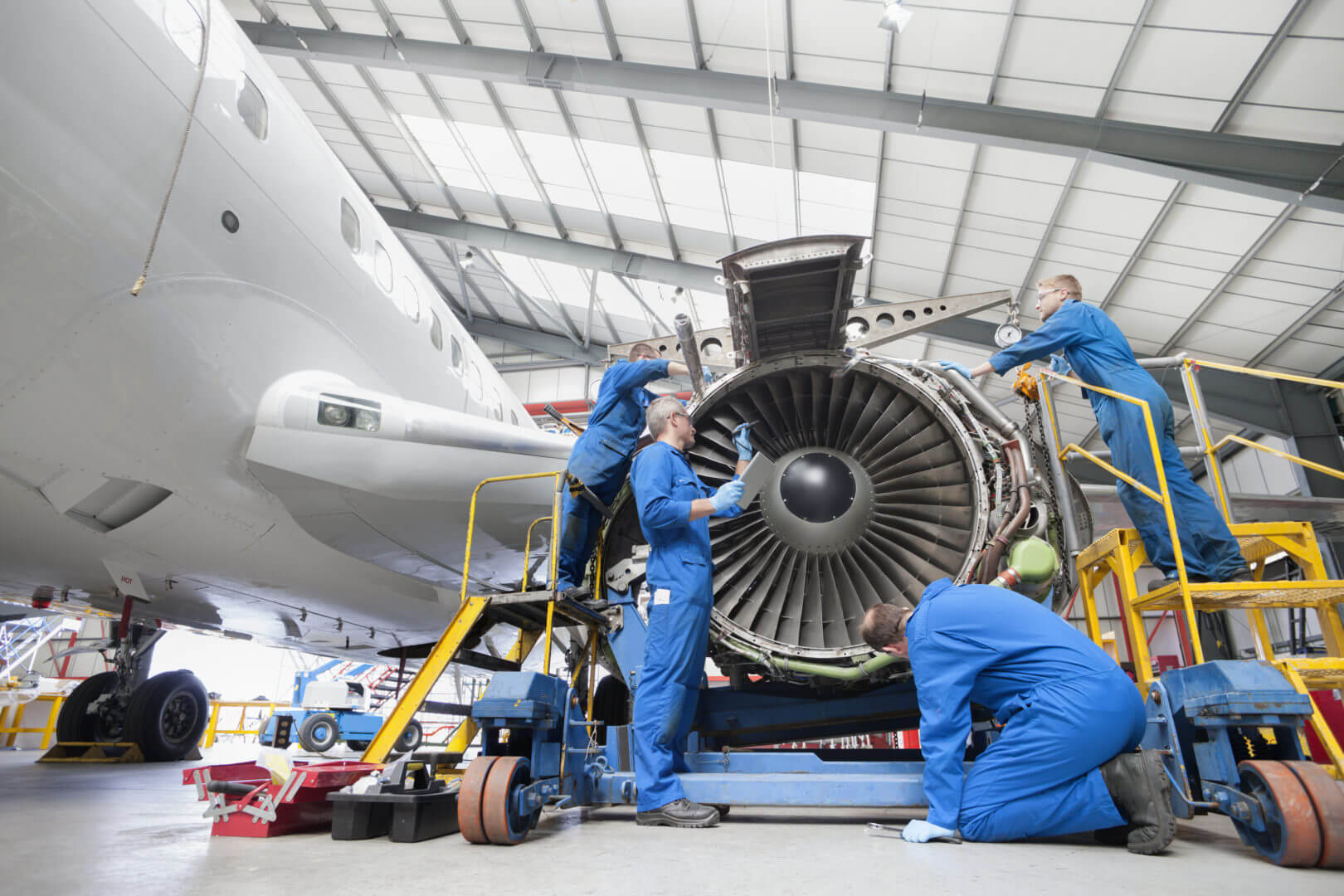
Propelling Futures Forward
USC partners with nonprofit Base 11 for rocket-based STEM education
Starting this spring, a cohort of top students from area community colleges will have an opportunity to participate in the USC Viterbi School of Engineering’s student-run Rocket Propulsion Lab. The program is part of a new partnership between USC Viterbi and the nonprofit organization Base 11, which are teaming up to build a pipeline for underserved students interested in pursuing STEM careers and to spur entrepreneurship and innovation.
The partnership, made possible by a gift from philanthropist Foster Stanback, will support RPL’s efforts to be the first undergraduate team to launch a rocket into space. Participating community college students will be full-fledged members of the RPL, collaborating on rocket technologies in the lab and traveling to desert sites to fire engines and launch rockets. In addition, during the summer, students will take up residence at USC and conduct research on building devices or other engineering objects, which may include working on small-scale applications such as drones.
“The partnership with USC is game changing,” said Base 11 CEO Landon Taylor.
“We are thrilled with the Base 11 partnership, which will help attract more students into engineering, particularly from underrepresented backgrounds,” said USC Viterbi Dean Yannis Yortsos. “In particular, we are pleased that the students will be highly engaged in the fascinating and rapidly growing space industry.”




